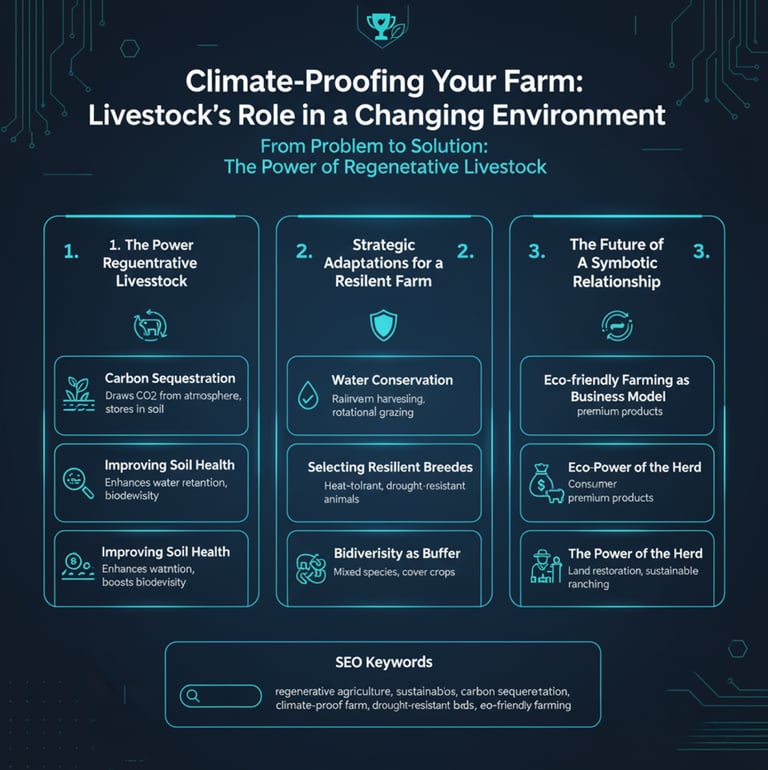Beyond the Basics: Advanced Breeding Techniques for Stronger Herds
For centuries, farmers have used selective breeding to improve their livestock. By choosing the best animals to reproduce, they've gradually enhanced desirable traits like milk production, growth rate, and disease resistance. But in the modern age, a new set of advanced livestock breeding techniques has revolutionized how we approach herd genetics. These methods allow farmers to accelerate genetic improvement in livestock, leading to healthier, more productive, and more profitable herds than ever before. Let's dive into some of the most impactful breeding technologies that are taking animal agriculture to the next level. 1. Artificial Insemination (AI) Artificial insemination is one of the most widely used and accessible advanced breeding techniques. Instead of relying on natural mating, AI involves collecting semen from a genetically superior male and using it to inseminate multiple females. How it Works: In a simplified process, semen is collected, evaluated for quality, and then frozen in small straws for long-term storage. When a female is in heat, a trained technician or veterinarian thaws a straw and deposits the semen into her reproductive tract. Benefits: The advantages of artificial insemination in cattle and other species are immense. It allows a single, high-quality male to sire hundreds or thousands of offspring, dramatically speeding up genetic progress across a herd. It also eliminates the need to house and manage a male animal, which can be costly and potentially dangerous. 2. Embryo Transfer (ET) While AI allows for the widespread use of a superior male's genetics, embryo transfer in livestock unlocks the full potential of an elite female. It's a method that allows a high-quality female to produce multiple offspring in a single year, far more than she could naturally. How it Works: A valuable female is treated with hormones to induce her to ovulate multiple eggs. She is then artificially inseminated with semen from a superior male. After a few days, the resulting embryos are flushed from her uterus. These embryos are then either transferred into recipient females (surrogate mothers) who will carry them to term or are frozen for future use. Benefits: ET is a powerful tool for rapid genetic improvement and accelerating the proliferation of valuable maternal lines. It allows a farmer to multiply the impact of their best females, turning a handful of top-tier cows into a foundational line for the entire herd. 3. Genomic Selection Genomic selection is a groundbreaking technology that takes the guesswork out of selective breeding. Historically, farmers had to wait for an animal to mature and produce offspring to evaluate its genetic potential. Genomic selection changes this entirely. How it Works: Scientists can now analyze an animal's DNA to identify specific genes that correlate with desirable traits, such as high milk yield, resistance to a specific disease, or rapid growth. By taking a small tissue sample from a young animal, researchers can "read" its genetic code and predict its performance with high accuracy. Benefits: This technology allows farmers to make breeding decisions earlier and with greater confidence. They can identify the most promising animals in a herd at a very young age, saving time and resources. It also allows them to select for complex traits like disease resistance more effectively, improving overall livestock health management and herd resilience. 4. Reproductive Management Beyond the specific techniques, reproductive management in animals is a crucial element of a successful breeding program. This involves a comprehensive plan to monitor the reproductive cycles of the animals and time the use of advanced breeding technologies for maximum efficiency. Synchronization: Farmers can use hormones to synchronize the heat cycles of a group of females. This means they can be inseminated at the same time, which simplifies management, reduces labor costs, and results in a more uniform calf crop. Data Analysis: Modern farms use sophisticated software to track the breeding and health data of every animal. This data is essential for making informed decisions about which animals to breed, when to breed them, and how to optimize overall herd productivity. In conclusion, advanced breeding techniques are no longer just for large-scale operations. As the technology becomes more accessible, it's allowing farmers of all sizes to make smarter, more strategic decisions. By leveraging tools like AI, embryo transfer, and genomic selection, they are building stronger, more productive herds that are better equipped to thrive in the modern agricultural landscape.
Mr. Diyan Ahmed
9/27/20251 min read


Connect
Partnering for innovation across industries.
Explore
Discover
+923001534092
© 2025. All rights reserved.
